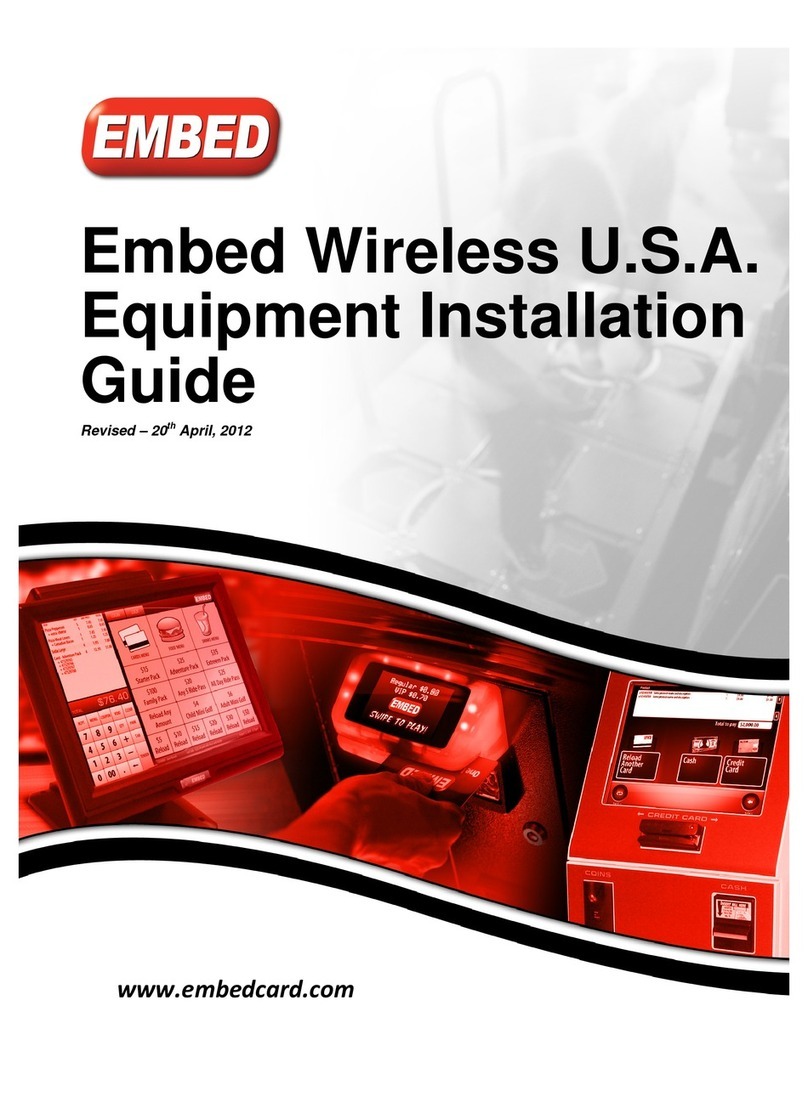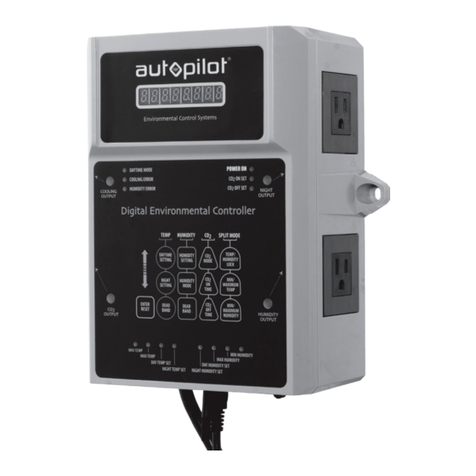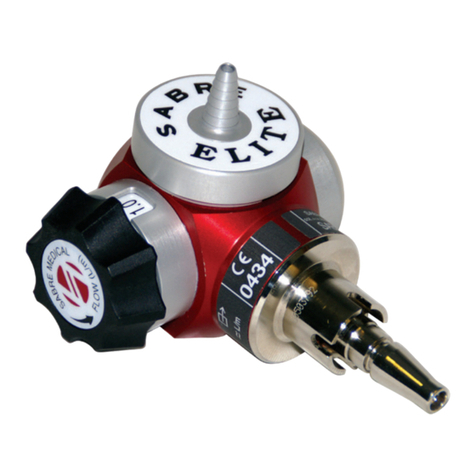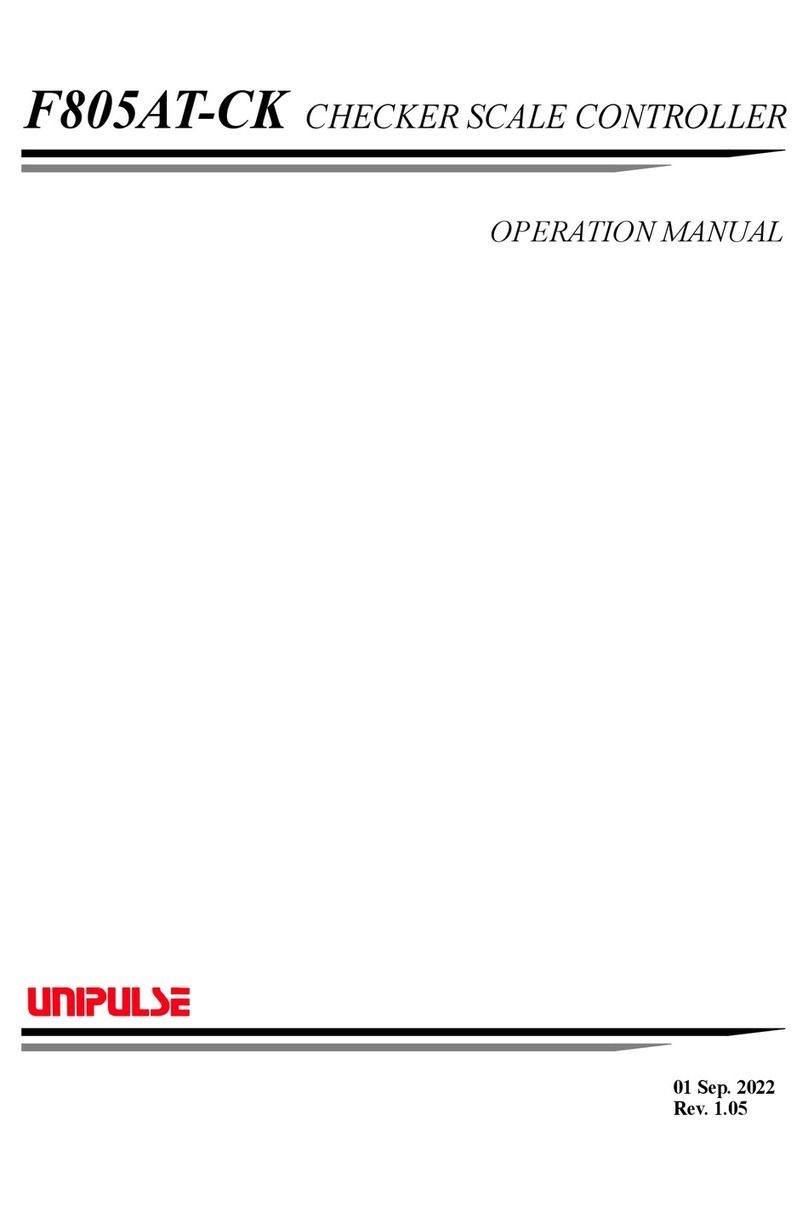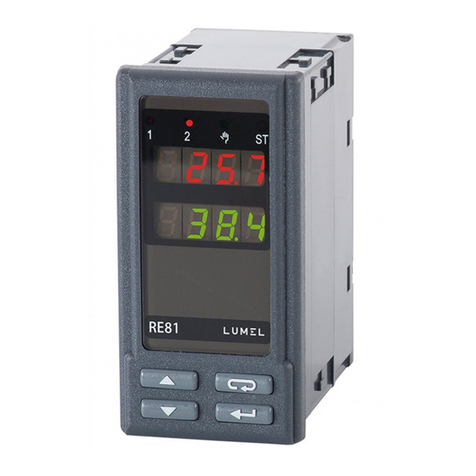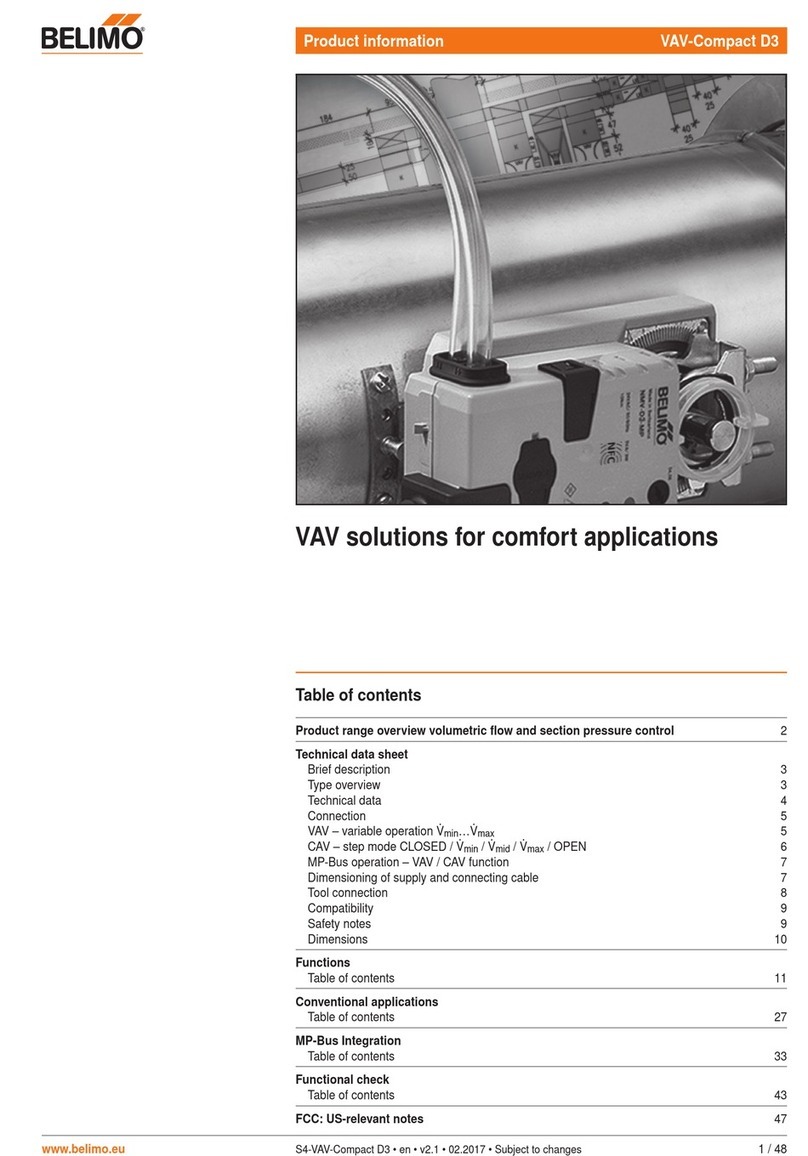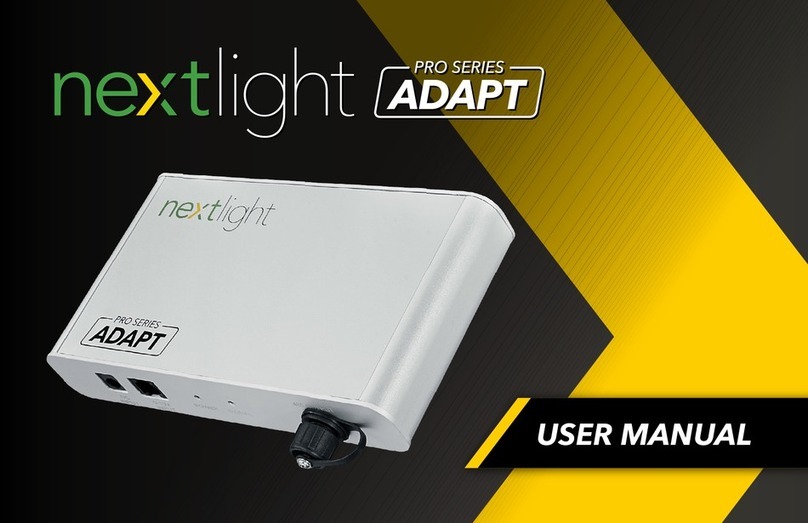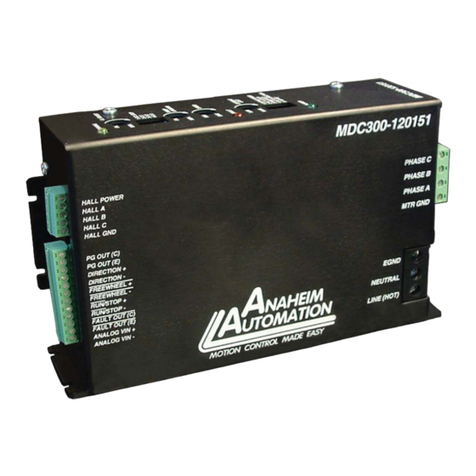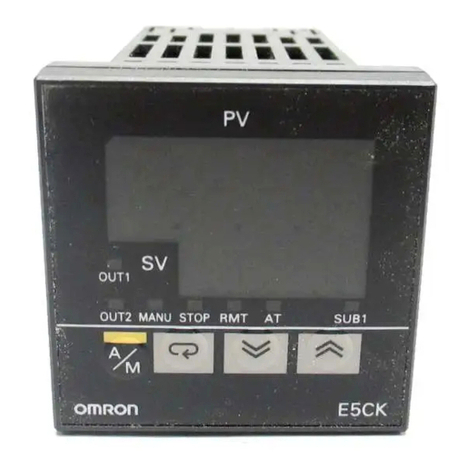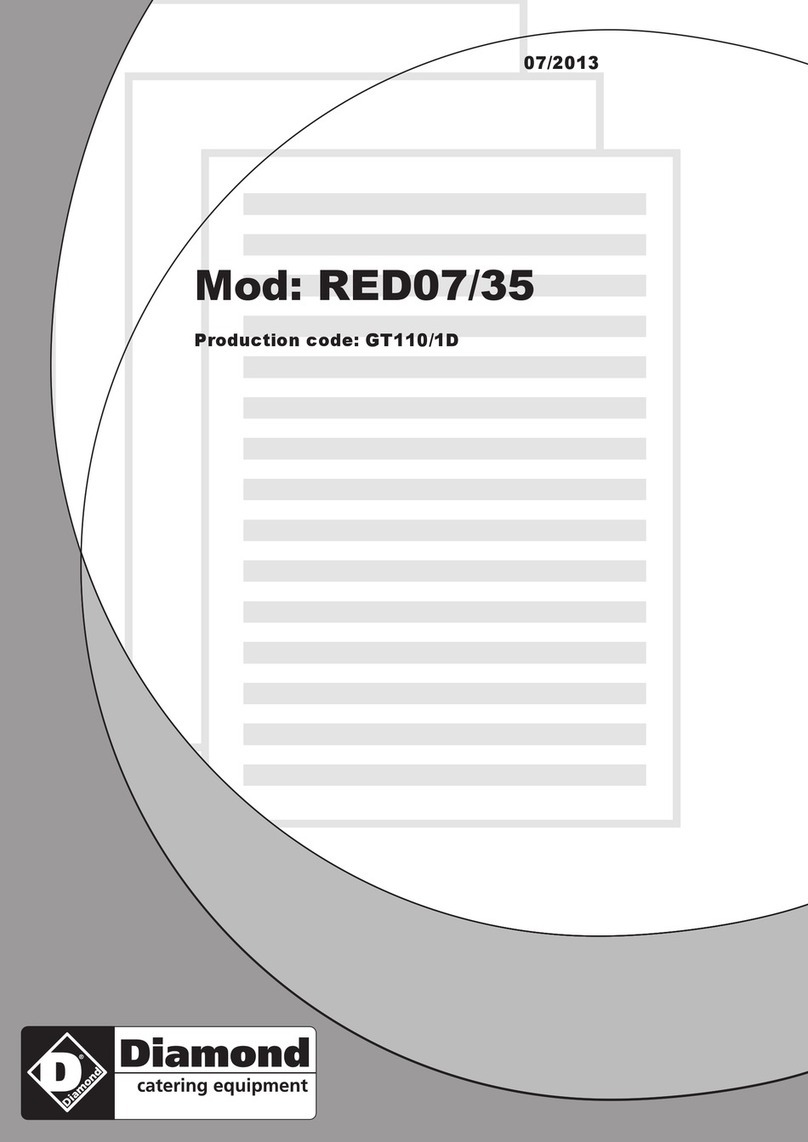NEXTTEQ CBA User manual

INSTRUCTION
MANUAL
Nextteq CBA
Regulator Kit
CBA Regulator Kit

CBA Regulator Kit
®
BETTER TECHNOLOGY. BETTER QUALITY.
BETTER VALUE.
Available in:
Standard CBA Regulator
Kit P/N STD-300
Deluxe Airteq Regulator Kit
P/N STD-301

TABLE OF CONTENTS
I. INTRODUCTION .............................................................. .4
II. WARNINGS ................................................................... .9
III. CBA KIT COMPONENTS..................................................... .13
IV. TESTING PROCEDURES .................................................... .15
V. MAINTENANCE & TROUBLESHOOTING .................................. .18
VI. SAMPLING TIPS ............................................................. .19
VII. APPENDICES ................................................................. .21
VIII. NEXTTEQ NX-1000 GAS DETECTION SYSTEM........................... .23

Designed, built and supported by industry professionals for industry professionals.
4
I. INTRODUCTION
_______________________________________________________________________
Part 1 Monitoring Breathing Air
_______________________________________________________________________
A chemical plant worker inspecting a tank car cleaning operation, a fire
fighter donning his self-contained breathing apparatus, and a SCUBA
diver on a weekend holiday all face a common situation. Each is putting
his or her life on the line by hooking up to a temporary air supply.
Assured that by using a life-supporting device he/she is being provided
maximum protection, the quality of that breathing air is probably the last
thing on his or her mind.
A quantitative testing device is the only way to assure that the breathing
air quality meets minimum standards. The faster, easier, and less
expensive such testing is, the more often it can be applied.
A compressed breathing air system has two potential sources of
contaminants: (1) those entering the system with the intake air and
(2) those produced internally by a faulty compressor or inadequate
filtration system. An example of the first type would be vehicle exhaust
intrusion caused by locating the compressor air inlet too close to traffic
areas or loading zones. An example of the second type might be oil mist
accumulation caused by an overfilled oil reservoir and inadequate filter.
Some common breathing air contaminants are carbon monoxide, carbon
dioxide, nitrogen oxides, oil mist, and water vapor, as well as oxygen
deficiency.
• Carbon Monoxide
Of the common potential contaminants, CO is the most deadly. It is
colorless and odorless with no warning properties. CO combines
with blood hemoglobin more readily than oxygen causing oxygen
starvation in body tissues. Exposure causes headaches, heart
palpitations, and loss of equilibrium, confusion, unconsciousness,
and death.
• Carbon Dioxide
CO2 is also toxic but can be tolerated in much higher concentrations
than CO. Effects are somewhat similar to CO, but the increased
breathing rate accompanying CO2 poisoning increases the intake
of all coexisting contaminants. Exposure causes headaches,
dizziness, sweating, shortness of breath, increased heartbeat and
blood pressure, coma, asphyxiation, and convulsions.

• Oil Mist
Oil mist and particulate matter are forms of condensed
hydrocarbons. The larger particles are readily removed by the
upper respiratory tract, but smaller particles can be retained and
cause problems. Oil mist in the lungs can cause lipoid pneumonia,
and emphysema.
• Water Vapor
Water Vapor in a breathing air system causes different problems. It
can promote system corrosion and cause regulator failures due to
icing in cold weather. It can destroy the catalyst in a filtration system
that removes CO by converting it to CO2.
The CBA Regulator
Outlet Hose Barb
Flowmeter
Inlet Pressure Gauge
CGA 346 Connection

Designed, built and supported by industry professionals for industry professionals.
6
_______________________________________________________________________
Part 2 CBA Kit
_______________________________________________________________________
Your CBA Kit includes the following components:
• Regulator
• Regulator Gauge
• Flow Meter
• Tube Holder
_______________________________________________________________________
Part 3 CBA Detector Tubes
_______________________________________________________________________
The CBA Kit is designed for use with the following Nextteq Tubes:
• Carbon Monoxide
• Carbon Dioxide
• Nitrogen Oxides
• Oil Mist
• Water Vapor
WARNING – Use only the Nextteq tubes listed above.
CBA detector tubes are designed to meet the monitoring requirements for
maintaining Grade D (Compressed Gas Association) breathing air. These
standards are listed in Table 1 (below).
TABLE 1
Note – The CBA Kit is not equipped to monitor for oxygen deficiency. Nextteq International LLC
recommends the use of a portable sample draw oxygen meter.
Table 2 lists the data for Nextteq CBA Tubes included in the kit. Tube
packages contain detailed instruction sheets on the storage and use of
the tubes, as well as instructions on interpreting tube readings. Tubes are
packaged ten per box, allowing ten tests. Tubes may be used only once.
Gas/Substance Level Comments
Carbon Dioxide 1000 ppm Maximum level
Carbon Monoxide 10 ppm Maximum level
Oil Mist 5 mg/m3Maximum level
Oxygen 19.5 – 23.5%
Water Vapor – Varies with use requirements

_______________________________________________________________________
Part 4 Accuracy and Calibration
_______________________________________________________________________
The CBA System when used in accordance with tube instructions
provides an accuracy of 25%.
The flow meter is factory calibrated and should not require recalibration
with normal use and proper care of the unit.
Should a calibration check be required, the unit may be returned to the
factory, or calibration may be checked using a soap film bubble meter.
TABLE 2
* Oil Mist test may be run 1000 scc/min for 20 min as indicated in tube instructions. Flow rates
over 500 scc/min require a high range flow meter. However, Nextteq International’s Regulator has a
maximum flow rate of 500 scc/min, so the oil mist tubes should run at a 500 scc/min for 40 minutes.
All tubes have a Temperature Range of 4-40˚C.
FIGURE 2 - CBA & BOTTLED AIR
Gas/Substance Part No. Measuring
Range
Flow Rate
(cc/min)
Sample
Time
(min)
Color Range
Carbon Monoxide 1A 5-50 ppm 100 3 Yellow to Dark Brown
Carbon Dioxide 2A 250-3000 ppm 100 5 Yellowish Orange to Yellow
Water Vapor 6AH 500-5000 ppm 300 1 Green to Purple
Water Vapor 6A 20-80 mg/m3100 5 Yellow to Green
Water Vapor 6AG 150-3000 mg/m3300 1 Green to Purple
Nitrogen Oxides 11A 0.02-0.7
0.06-2
100
100
5
2
White to Bluish Green
Oil Mist* 109AD 0.2-5.0 mg/m31000 20 Orange to Pale Blue

Designed, built and supported by industry professionals for industry professionals.
8
FIGURE 3 - CBA & COMPRESSED AIR

II. WARNINGS
_______________________________________________________________________
READ AND UNDERSTAND ALL WARNINGS BEFORE USE
_______________________________________________________________________
Read and understand ALL warnings before using this product. Failure to
read, understand, and comply with ALL warnings could result in property
damage, severe personal injury or death.
Read and understand ALL applicable Federal, State, and Local
environmental health and safety laws and regulations, including OSHA.
Ensure complete compliance with ALL applicable laws and regulations
before and during use of this product. In particular, follow ALL OSHA
guidelines as set forth in Federal Register 20 CFR Part 1910.134 (d)
(2) (ii) states that breathing air systems employing an oil-lubricated
compressor must install a carbon monoxide alarm or a high temperature
alarm or both. The CBA System does not substitute for a CO or high
temperature alarm.
UNDER NO CIRCUMSTANCES should this product be used except by
qualified, trained, technically competent personnel and not until the
warnings, Operation and Service Manual, labels, and other literature
accompanying this product have been read and understood.
The Operation and Service Manual must be read and understood by each
user before operating this product or using its accessories, in order to
ensure proper and safe use and installation of this product and to ensure
familiarity with the proper treatment and safety procedures in the event of
an accident.
ALWAYS dispose of chemicals and calibration sources in compliance
with ALL applicable safety laws, regulations, and guidelines for proper
disposal. Failure to do so may result in environmental and property
damage, personal injury or death.
DO NOT remove or alter any label or tag on this product, its accessories,
or related products.
DO NOT operate this product should it malfunction or require repair.
Operation of a malfunctioning product, or a product-requiring repair may
result in serious personal injury or death.
DO NOT attempt to repair or modify the instrument, except as specified in
the Operation and Service Manual. If repair is needed, contact the Nextteq
International LLC customer service department to arrange for a Returned
Material Authorization (RMA).
WARNING

Designed, built and supported by industry professionals for industry professionals.
10
ONLY use genuine Nextteq International LLC replacement parts when
performing any maintenance procedures provided in this manual.
Failure to do so may seriously impair instrument performance. Repair
or alteration of the product beyond the scope of these maintenance
instructions, or by anyone other than an authorized Nextteq International
LLC serviceman, will void the warranty, and could cause the product to
fail to perform as designed and persons who rely on this product for their
safety could sustain severe personal injury or death.
Review the interferences for each detector tube used in conjunction with
this equipment.
Observe any temperature of humidity corrections for the detector tubes
used with this equipment.
Use ONLY Nextteq detector tubes designed for use with the CBA System.
DO NOT use other brands of detector tubes with the CBA tube holder.
Detector tubes contain chemical reagents. DO NOT ingest or allow
children to ingest tube contents.
Avoid cuts from broken detector tubes.
The tube holder may have to be held in place during tube installation.
Excessive stretching of the tube holder will shorten the useful life of the
tube holder.
The regulator incorporated in this equipment has a maximum inlet
pressure of 3000 psig.
DO NOT exceed this pressure.
The flow meter will not operate properly if the regulator inlet pressure
drops below 50 psig.
The CBA System should be checked for leaks on a routine basis. Cracks
or leaks in the flow meter cover tube can affect flow meter accuracy.
Leaks between the flow meter and the tube holder will result in low
detector tube readings.
The flow meter is calibrated for breathing air. It is not accurate when
applied to other gases.
The preset regulator delivery pressure of 50 psig should not be altered.
The maximum safe pressure for the flow meter is 75 psig.

DO NOT over tighten ANY threaded connection. Over tightening the
regulator fitting can cause distortion of the threads and/or seating sur-
face. Over tightening the flow meter needle valve will damage fine internal
threads and sensitive metering seat.
The system should always be stored in a clean dry place when not in use.
Some bottled breathing air is prepared by blending liquid nitrogen and
liquid oxygen at 79% and 21% respectively. Oxygen content should be
monitored when this type of breathing air is used.
DO NOT attempt to remove the CBA regulator from the breathing air
source while the regulator is under pressure.
Take precautions against water entry into the regulator. Use line pressure
to blow out the connector prior to regulator hookup when sampling com-
pressed air.
Be sure that the weight of the CBA System is properly supported during
hookup to compressed air lines.
Be sure that any adapters prepared for use of the CBA System on com-
pressed air lines are capable of handling line pressure.
NEVER place the CBA regulator or flow meter in a vise.
Disclaimer of Warranties
Nextteq International LLC assumes no responsibility whatsoever, to any
party whosoever, for any property damage, personal injury, or death
received by or resulting from, in whole, or in part, the improper use,
installation, or storage of this product by the user, person, firm, entity,
corporation or party not adhering to the instructions and warnings or
not adhering to all federal, state, and local environmental and occupa-
tional health and safety laws and regulations.
The seller shall not be liable for direct, indirect, consequential, inci-
dental or other damages resulting from the sale and use of any goods
and seller’s liability hereunder shall be limited to repair or replace-
ment of any goods found defective. This warranty is in lieu of all other
warranties, expressed or implied, including but not limited to the im-
plied warranties of merchantability and fitness for a particular purpose,
which is expressly disclaimed.

Designed, built and supported by industry professionals for industry professionals.
12
_______________________________________________________________________
READ CAREFULLY BEFORE USING THIS PRODUCT
_______________________________________________________________________
Some safety rules associated with compressed air systems are listed
below.
This equipment is pressurized when in service and can cause personal
injury if it is improperly used or maintained.
DO NOT attempt to operate this equipment if any part is damaged or
broken.
DO NOT tamper with the preset regulator adjusting screws as over
pressurization could occur.
DO NOT connect the flow meter to any pressure source capable of
exceeding 75 psig.
DO NOT attempt to alter or repair this equipment yourself. Return to
factory for repairs.
DO NOT use this equipment for gases other than compressed air.
Compressed air at high pressures can accelerate burning of combustible
materials.
Compressed air cylinders should not be used for breathing air unless
specifically labeled as breathing air.
Compressed air cylinders should always be secured (e.g. chained) to a
wall, post or in a cylinder cart in an upright position when in use.
Compressed air cylinders should not be exposed to heat or sparks.
Smoking is prohibited in cylinder storage or usage areas.
NEVER operate motorized vehicles near a breathing air compressor inlet.
Filter systems utilized for purifying breathing air from oil-lubricated
compressors employ a catalyst to convert CO to CO. Water contact will
deactivate the catalyst.

III. CBA KIT COMPONENTS
_______________________________________________________________________
Part 1 Regulator
_______________________________________________________________________
The regulator is a two-stage breathing air regulator. It is preset at the
factory to deliver 50 psig to the flow meter. It is precision-machined from
solid brass stock. Internal parts are protected by a double filter system of
sintered Monel metal, backed by sintered bronze. A preset safety device
prevents overloading.
WARNING – The regulator has a maximum inlet pressure of 3000 psig.
Do not exceed maximum inlet pressure. The regulator will not operate
properly if the inlet pressure drops below 50 psig. The preset delivery
pressure of 50 psig should not be altered. Above 60 psig, the safety valve
will vent off excess pressure to prevent damage to the flow meter.
TABLE 3 REGULATOR SPECIFICATIONS
_______________________________________________________________________
Part 2 Flowmeter
_______________________________________________________________________
The flow meter is a ball and tube assembly equipped with a metering
valve. The system is backpressure compensated to maintain constant
flow when downstream pressure fluctuations occur. It is calibrated for
a delivery pressure of 50 psig and for readings at the center of the ball
(refer to Figure 4, page 17)
For maximum accuracy, the flow meter should be mounted vertically. This
may be checked with a level, although setting “by eye” is adequate. The
flow meter ball should float and rotate freely throughout the length of the
tube.
The flow meter is calibrated a 70˚F (21.1˚C) and 50 psig for breathing air.
Caution: It is not suitable for use with other gases and cannot be used
with pure oxygen.
Read the flow meter at the center of the ball. The flow meter is marked
with lines at 25 cc/min increments and numbers at 100 cc/min
increments.
Item Specifications
Maximum Inlet Pressure 3000 psig
Outlet Pressure 50 psig preset
Inlet Gauge Range 0-4000 psi
Inlet Connection CGA 346 (CGA – 590 available)

Designed, built and supported by industry professionals for industry professionals.
14
Important: The flow meter is housed in a pressurized cover tube. Cracks
or leaks in the cover tube will affect system accuracy. Leaks between the
flow meter and the tube holder will result in low tube readings.
Flow meter specifications are shown in Table 4.
_______________________________________________________________________
Part 3 Tube Holder
_______________________________________________________________________
The tube holder is designed to hold a Nextteq detector tube leak-tight in
series with the regulator flow meter.
Important: Use only Nextteq CBA tubes. Other Nextteq tubes are NOT
calibrated for use with this type of sample delivery. See Section 1 for
further information.
FIGURE 4 READING THE FLOWMETER
TABLE 4 FLOWMETER SPECIFICATIONS
Item Specifications
Range 100-500 scc/min
Delivery Pressure 50 psi (preset)
Backpressure Compensation Yes
Metering Value Integral with flow meter

IV. TESTING PROCEDURE
_______________________________________________________________________
Part 1 Introduction
_______________________________________________________________________
The CBA kit is equipped with a CGA 346 fitting for breathing air bottles.
This fitting is specified by the compressed Gas Association to be used only
for breathing air bottles. The CBA Kit may also be used for filtration and
carbon monoxide removal devices, by providing a quick disconnect near
the respirator hookup. See Figure 3 (page 15). Refer to section 3.3 (page
20) for details on monitoring compressor-supplied systems.
_______________________________________________________________________
Part 2 Bottled Breathing Air
_______________________________________________________________________
The following test procedure should be followed when testing bottled
breathing air.
1. Open the bottle valve momentarily to blow away any foreign material
that may have accumulated inside the connection.
2. Connect the regulator to the breathing air bottle and tighten it with
an appropriate wrench. (The fitting takes a 1-1/8” open-end wrench).
The flow meter should be mounted vertically for maximum accuracy.
Close the adjustment knob by turning it fully clockwise (do not over
tighten), then open it 2 turns counterclockwise.
WARNING – Do not over tighten the regulator fitting. Severe over
tightening will cause distortion of the threads and/or seating surface.
3. Open the bottle valve completely and read the gauge pressure on the
regulator. The pressure should be no less than 150 psig and no more
than 3000 psig.
4. Adjust the flow meter needle valve momentarily to assure the flow
meter ball move freely throughout the entire length of the tube. Shut
off flow meter valve (turn it counter-clockwise to open and clockwise
to close).
WARNING – Do not over tighten the flow meter needle valve. Over
tightening will damage the fine internal threads and sensitive metering
seat! The needle valve NEVER needs to be closed tightly.
5. Break the end off of a fresh tube and install it in the tube holder.
Note the directional arrow. Hold the tube holder in place with your
free hand during stretching. The arrow should point away from
the flow meter (or downward in the normal configuration). The
tube is installed by first inserting the upper end into the holder then
stretching the holder over the lower end of the tube.
WARNING – Avoid cuts from broken tubes during this operation.

Designed, built and supported by industry professionals for industry professionals.
16
Caution: Excessive stretching of the tube holder will shorten the useful life
of the tube holder. Take care to install the tube with minimal stretching of
the holder.
6. Set the flow rate and start timing the sample as quickly and
smoothly as possible. This may seem difficult at first, but
smoothness will come with experience. Start with a 1-minute test
(H2O) first. See table 2 (page 13). Read the center of the ball.
7. At the end of the time period, immediately read the tube and
record the results. Repeat with the other tubes until all of
the desired contaminants have been monitored. Consult your tube
instructions for details on sample time flow rate. See Section 5.1
(page 22) for tips on sampling.
8. Close the valve on the air bottle and open the flow meter valve to
bleed residual pressure off the CBA system. Be sure the pressure
is completely removed.
9. Disconnect the CBA regulator/flow meter system and store in a
clean dry place. Do not leave it in the field.
WARNING – Do not attempt to remove the CBA regulator from a breathing
air source while the regulator is under source pressure!
Important: Some bottled breathing air is prepared by blending liquid N2
and liquid O2 at 79% and 21% respectively. Oxygen content should be
monitored when this type of breathing air is used. Nextteq International
LLC recommends the use of an oxygen tube with pump and sampling bag.
WARNING – The CBA system should be checked for leaks on a
routine basis. This may be done by applying soap solution around the
connections. The critical area to check is between the flow meter and the
tube holder. See Section 4.1 (page 21).
_______________________________________________________________________
Part 3 Compressor Systems
_______________________________________________________________________
The CBA Kit may also be used for monitoring compressed breathing
air systems. See Figure 3 (page 15). The CBA System should be placed
as close as possible to the respirator hookup. The line pressure must
be above 50 psig in order for the flow meter to work properly. The test
procedure is the same as that for bottled air outlined in Section 3.2 (page
18).
To use the CBA System with a compressed air system, prepare an adapter
as outlined below in a or b.
a. In the sample line near the respirator hookup install a valve and

a CGA 346 connection. The connection may be obtained from your
local compressed gas supplier. It is the type used on breathing air
bottles.
b. Prepare a quick disconnect adapter in the following manner. Obtain a
CGA 346 bottle connection from your local compressed gas supplier.
Attach it in a leak-tight manner to a quick disconnect fitting from one
of your respirators. Your CBA System may now be connected
directly into your respirator hookup.
WARNING – Take precautions against water entry into the regulator. Use
line pressure to blow the connector out prior to regulator hookup.
Be sure that the weight of the CBA regulator/flow meter is properly
supported during testing. Be sure that the adapters are leak tight and
capable of handling line pressure.
Federal Register 29 CFR Part 1910.134 (d) (2) (ii) states that breathing air
systems employing an oil-lubricated compressor must employ a carbon
monoxide alarm, a high temperature alarm, or both. The CBA System
does NOT substitute for a CO or a high temperature alarm. (If only a
high temperature alarm is used, frequent CO testing is required. The CBA
System is suitable for such testing.)
Filtration systems utilized in purifying air from oil-lubricated compressors
employ a catalyst to convert CO to CO2. Note the following items:
a. The catalyst is ruined if contacted by water and will no longer be
effective.
b. If CO levels increase sharply between tests, this could be an
indication of CO intrusion or production in the compressor.
WARNING – Most CO intrusion into compressed breathing air systems is
caused by a CO source near the compressor inlet. Never operate motorized
vehicles near the inlet of a breathing air compressor!

Designed, built and supported by industry professionals for industry professionals.
18
V. MAINTENANCE & TROUBLESHOOTING
_______________________________________________________________________
Part 1 Testing for Leaks
_______________________________________________________________________
The CBA System will provide maximum accuracy only if the system is
leak free. Test for leaks by applying a soap solution to system connections
while the unit is under normal operating pressure. If a leak is detected,
tighten the fitting slightly and retest. Repeat until the leak is stopped.
WARNING – Do not over tighten connections. Return unit to factory if
leaks persist.
Below is a list of potential leak sites that would have a direct effect on tube
accuracy.
• Tube holder fitting
• Regulator/flow meter fitting
• Flow meter needle valve
• Flow meter cover tube
Leaks upstream (e.g. regulator fitting) although undesirable should not
affect system accuracy.
Note – Following leak checks allow 500 cc/min to flow through the flow
meter for 10 minutes to remove any moisture accumulation.
Note – Leak checks should be run 500 cc/min with a used tube in place
(use tube #109AD).
_______________________________________________________________________
Part 2 Equipment Failure
_______________________________________________________________________
In the event of failure of the regulator or flow meter return the unit to
Nextteq International LLC for servicing. Do not attempt to repair either the
regulator or the flow meter. For information on equipment returns, see
Appendix B: Returned Material Authorization (page 24).

VI. SAMPLING TIPS
_______________________________________________________________________
Tips for Tube Reading
_______________________________________________________________________
Tips for Tube Reading
The following items will be helpful when reading and interpreting the CBA
detector tubes.
1. Always read the tubes and record the results immediately after
testing. In some cases stains may fade or “crawl” within a few hours.
2. A tube may never be reused, even after a zero reading.
3. The oil mist tube is normally used at 500 scc/min for 40 minutes.
However, reliable results can be obtained using shorter sampling
periods and correcting the reading with a multiplication factor (see
below):
Test Duration Multiply Reading By
20 minutes 2
4. If at the end of a test you note that the stain has overshot the scale,
the actual concentration may be determined as follows:
a. Repeat the test with a new tube and observe the time required to
reach the highest calibration mark (full scale).
b. Multiply the full-scale concentration by the ratio of the
recommended test time to the actual test time.
Example
H2O tube reaches full scale (80 mg/m3) in 36 seconds. Recommended
time is 1 minute.
Ratio = 1 min/0.6 mins. = 1.66
Thus, the actual concentration is
80 x 1.66 = 133 mg/m3

Designed, built and supported by industry professionals for industry professionals.
20
5. Excessive water vapor (i.e., >3 mg/l of H2O) may cause the reagent in
the oil mist tube (PN 109AD) to stain yellow although the reading will
not be affected. Run the water vapor test before running the oil mist
test. The recommended testing priority is listed below.
1st…..H2O
2nd….CO2
3rd…..CO
4th…..Oil Mist
6. The proper stain color for oil mist tube is dark brown. Other color
changes should be disregarded.
7. Moisture intrusion in the oil mist tube (PN 109AD) causes a bleaching
of the reagent (see #5 above). If a stain is obtained on oil mist tube
and a bleaching has occurred around the zero, read the stain and
ignore the bleaching.
8. The H20 tube (PN 6A) responds to water vapor primarily with a
green stain, however in some cases a purple stain may also be
produced. Read the tube at the interface between yellow and green,
or the interface between the yellow and purple. Do not read the tube
at the interface between the green and purple stains if they co-exist.
9. The reading on the H2O tube should be recorded immediately. When
the tube is removed it will continue to respond to ambient moisture.
Similarly, place the tube in the holder as soon as possible after the
ends have been broken.
10. Always pay strict attention to the instruction sheets provided in the
tube boxes. Detector tubes have limits on temperature and humidity.
11. Accuracy in detector tube testing is ±25%
This manual suits for next models
2
Table of contents
Popular Controllers manuals by other brands
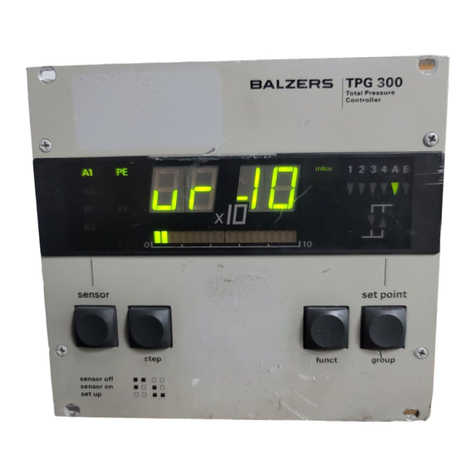
Pfeiffer Vacuum
Pfeiffer Vacuum TPG 300 operating instructions
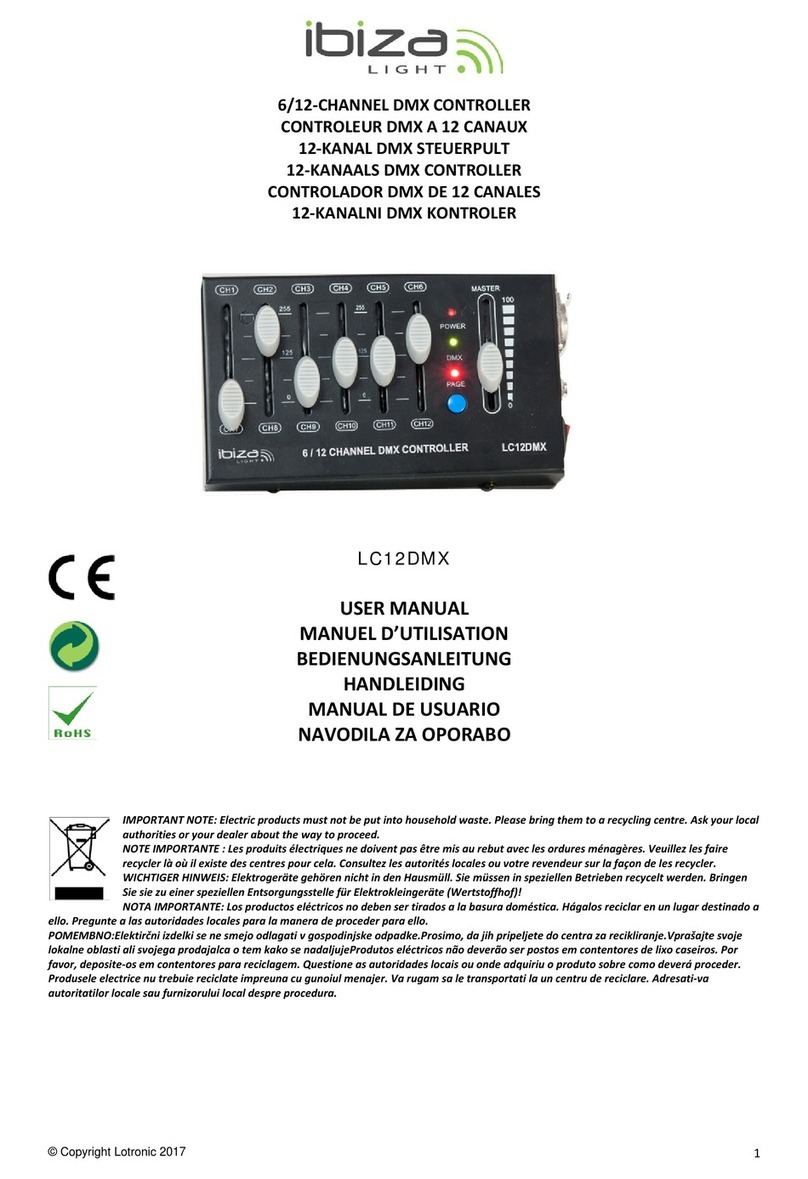
Ibiza
Ibiza LC12DMX user manual
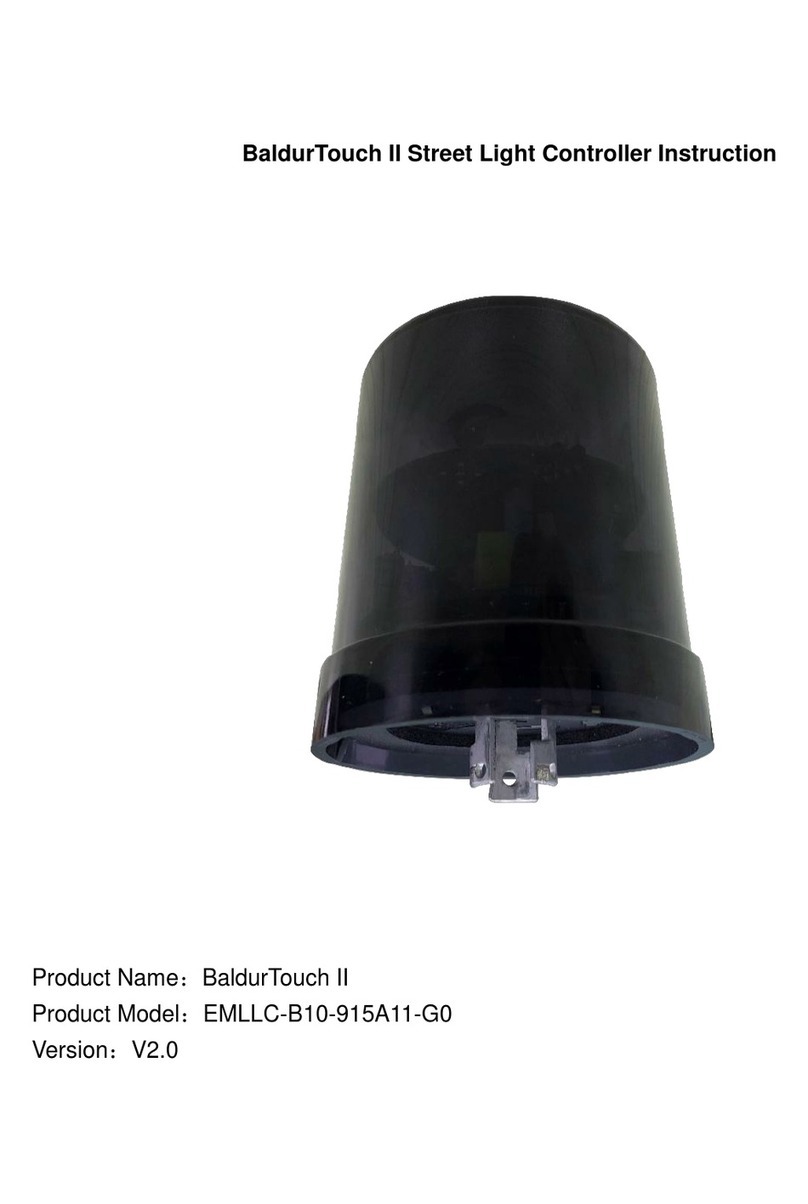
E-MAGA Interconnect
E-MAGA Interconnect BaldurTouch II instructions
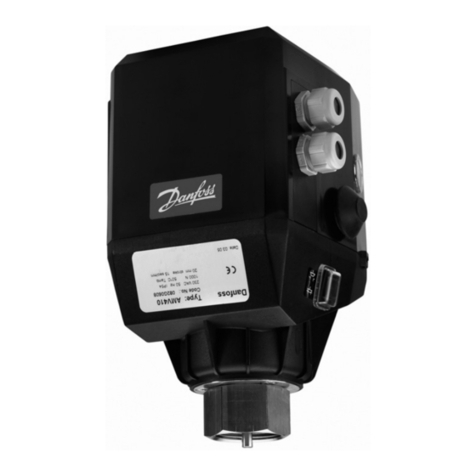
Danfoss
Danfoss AMV 410 installation guide
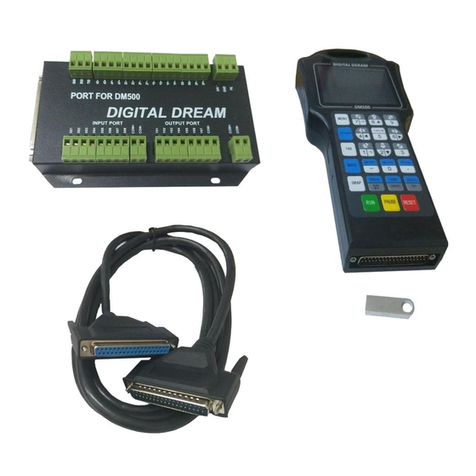
Digital Dream
Digital Dream DM500 user manual

Behringer
Behringer Eurolight BLM420 Technical specifications
